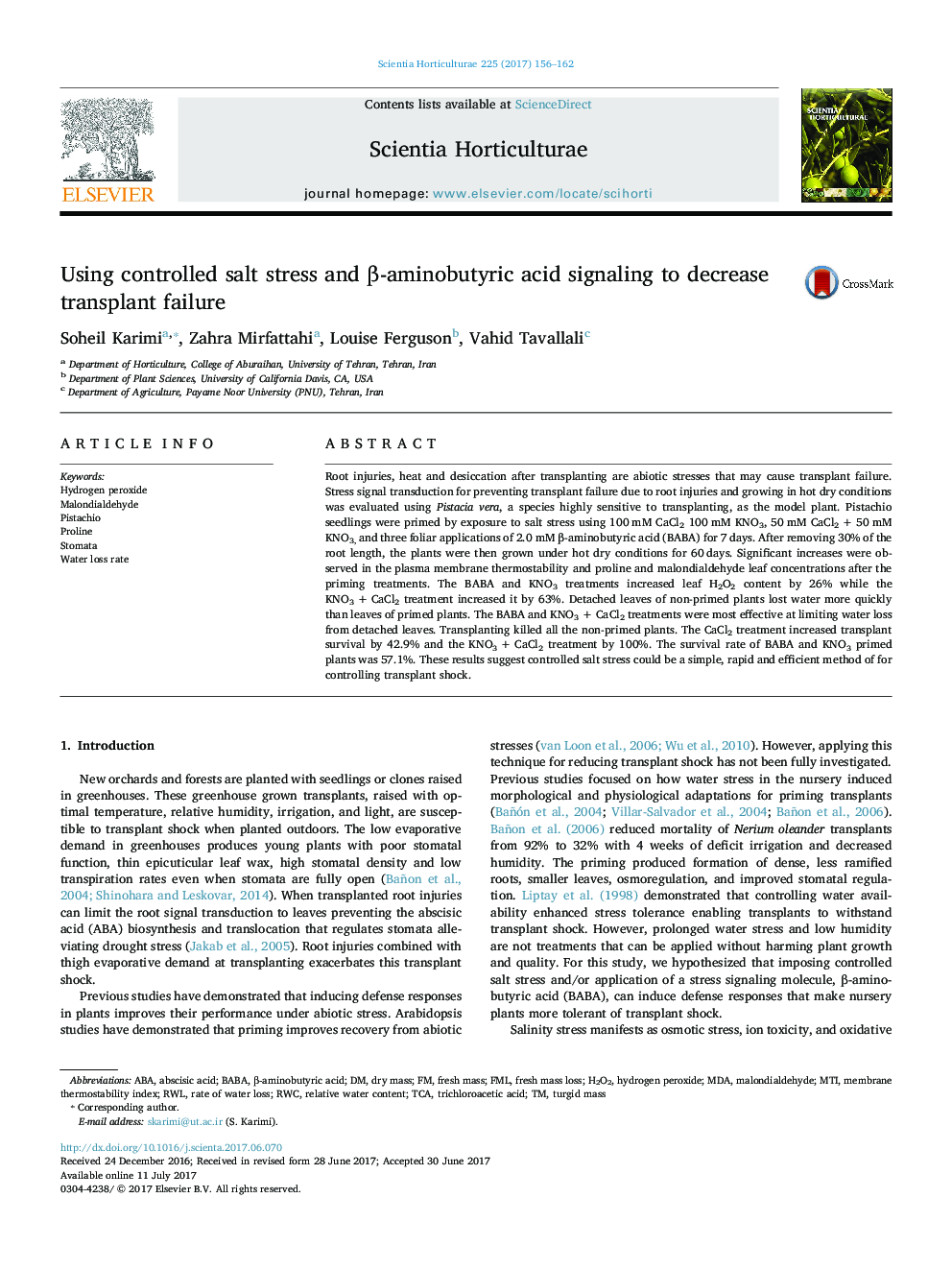| کد مقاله | کد نشریه | سال انتشار | مقاله انگلیسی | نسخه تمام متن |
|---|---|---|---|---|
| 5769252 | 1628773 | 2017 | 7 صفحه PDF | دانلود رایگان |

- Preplant planting mile salinity stress or foliar BABA applications mitigates transplant stress under extreme conditions.
- Salt type determined the tolerance of primed plants against transplant shock.
- Application of CaCl2Â +Â KNO3 was the most effective treatment for priming transplants.
Root injuries, heat and desiccation after transplanting are abiotic stresses that may cause transplant failure. Stress signal transduction for preventing transplant failure due to root injuries and growing in hot dry conditions was evaluated using Pistacia vera, a species highly sensitive to transplanting, as the model plant. Pistachio seedlings were primed by exposure to salt stress using 100 mM CaCl2 100 mM KNO3, 50 mM CaCl2 + 50 mM KNO3, and three foliar applications of 2.0 mM β-aminobutyric acid (BABA) for 7 days. After removing 30% of the root length, the plants were then grown under hot dry conditions for 60 days. Significant increases were observed in the plasma membrane thermostability and proline and malondialdehyde leaf concentrations after the priming treatments. The BABA and KNO3 treatments increased leaf H2O2 content by 26% while the KNO3 + CaCl2 treatment increased it by 63%. Detached leaves of non-primed plants lost water more quickly than leaves of primed plants. The BABA and KNO3 + CaCl2 treatments were most effective at limiting water loss from detached leaves. Transplanting killed all the non-primed plants. The CaCl2 treatment increased transplant survival by 42.9% and the KNO3 + CaCl2 treatment by 100%. The survival rate of BABA and KNO3 primed plants was 57.1%. These results suggest controlled salt stress could be a simple, rapid and efficient method of for controlling transplant shock.
109
Journal: Scientia Horticulturae - Volume 225, 18 November 2017, Pages 156-162